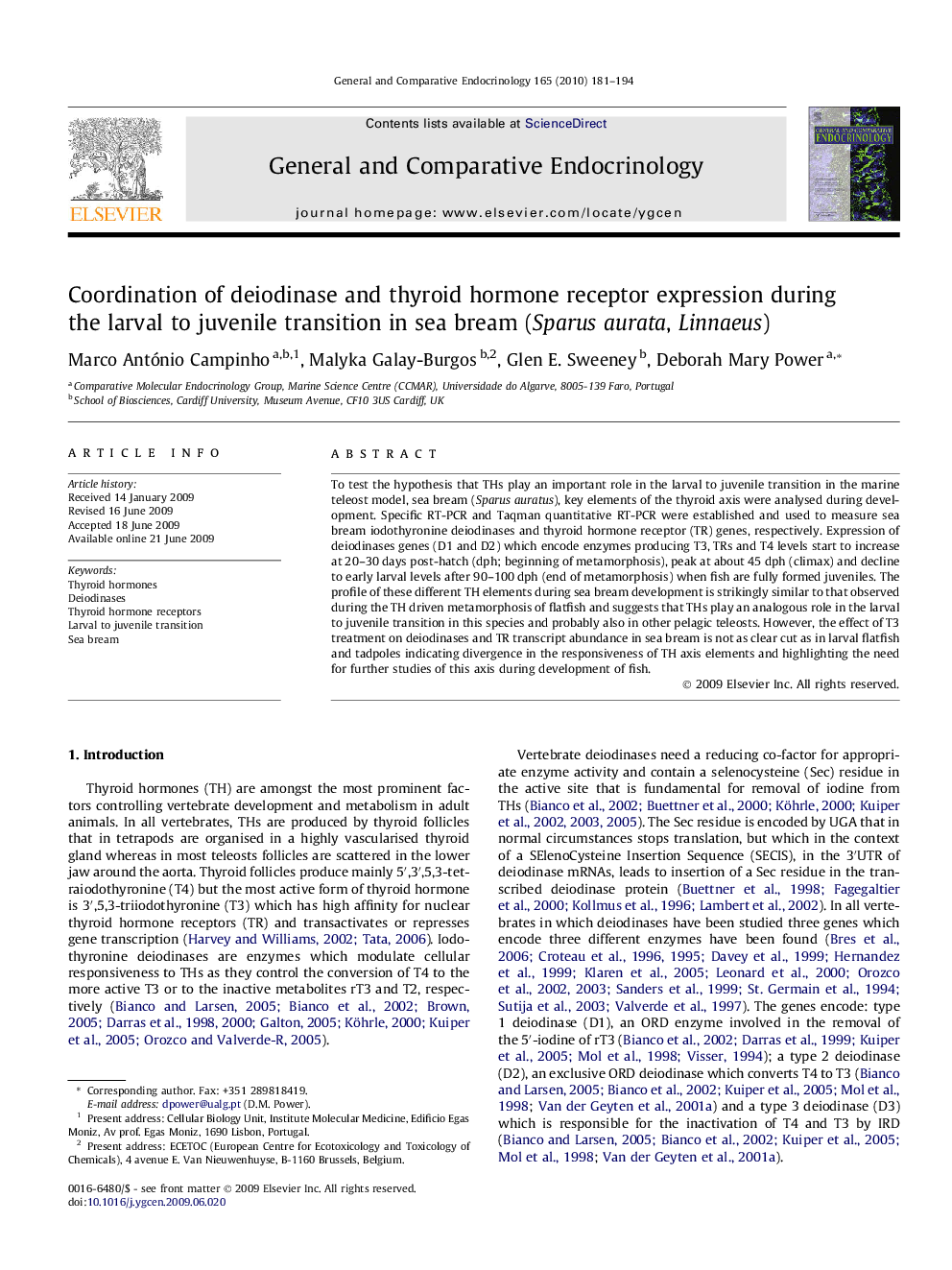| Article ID | Journal | Published Year | Pages | File Type |
|---|---|---|---|---|
| 2801442 | General and Comparative Endocrinology | 2010 | 14 Pages |
To test the hypothesis that THs play an important role in the larval to juvenile transition in the marine teleost model, sea bream (Sparus auratus), key elements of the thyroid axis were analysed during development. Specific RT-PCR and Taqman quantitative RT-PCR were established and used to measure sea bream iodothyronine deiodinases and thyroid hormone receptor (TR) genes, respectively. Expression of deiodinases genes (D1 and D2) which encode enzymes producing T3, TRs and T4 levels start to increase at 20–30 days post-hatch (dph; beginning of metamorphosis), peak at about 45 dph (climax) and decline to early larval levels after 90–100 dph (end of metamorphosis) when fish are fully formed juveniles. The profile of these different TH elements during sea bream development is strikingly similar to that observed during the TH driven metamorphosis of flatfish and suggests that THs play an analogous role in the larval to juvenile transition in this species and probably also in other pelagic teleosts. However, the effect of T3 treatment on deiodinases and TR transcript abundance in sea bream is not as clear cut as in larval flatfish and tadpoles indicating divergence in the responsiveness of TH axis elements and highlighting the need for further studies of this axis during development of fish.
